Plant Care
Care Instructions
Click on a species below to see specific instructions
Greenhouse Moments
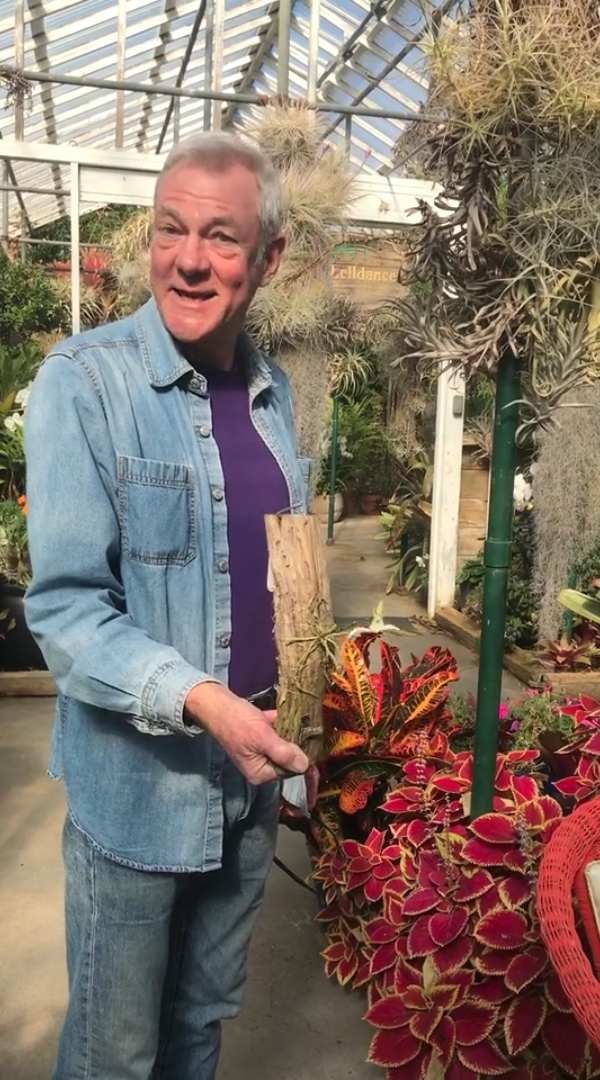
Greenhouse Moments 1
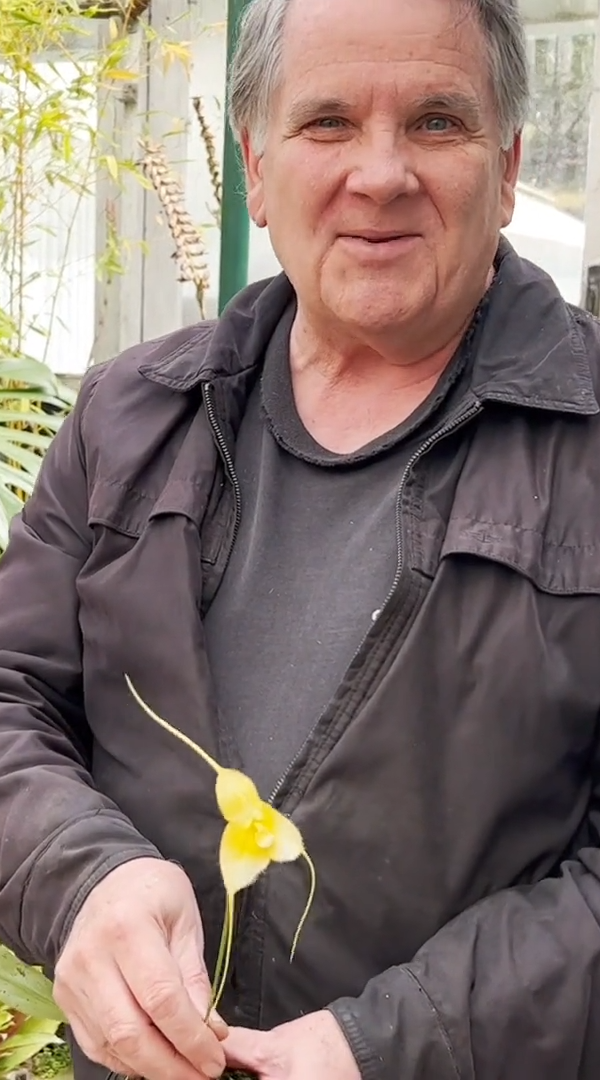
Greenhouse Moments 2
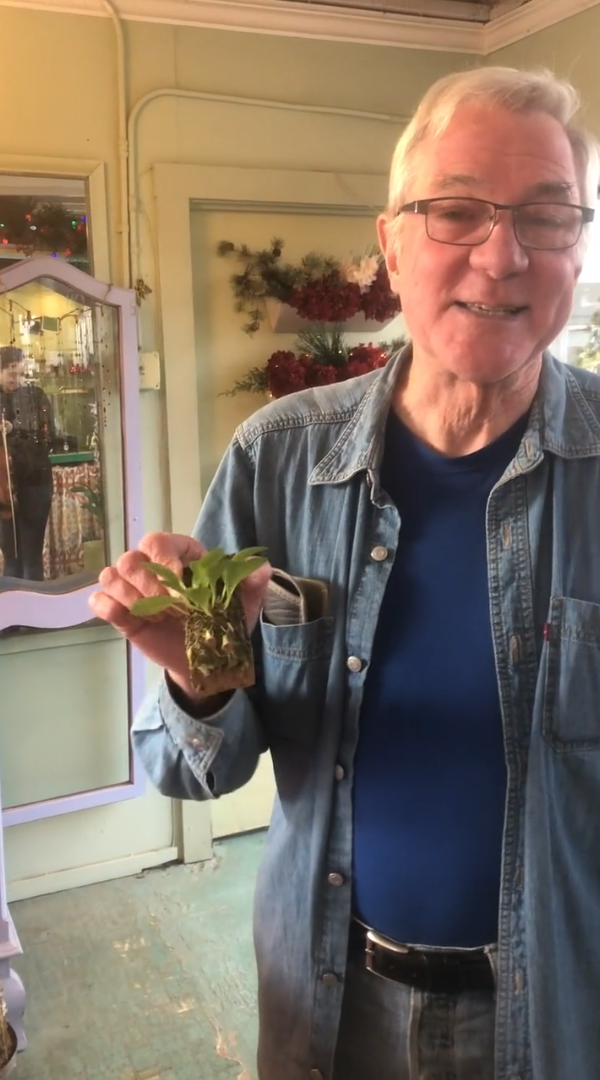
Greenhouse Moments 3
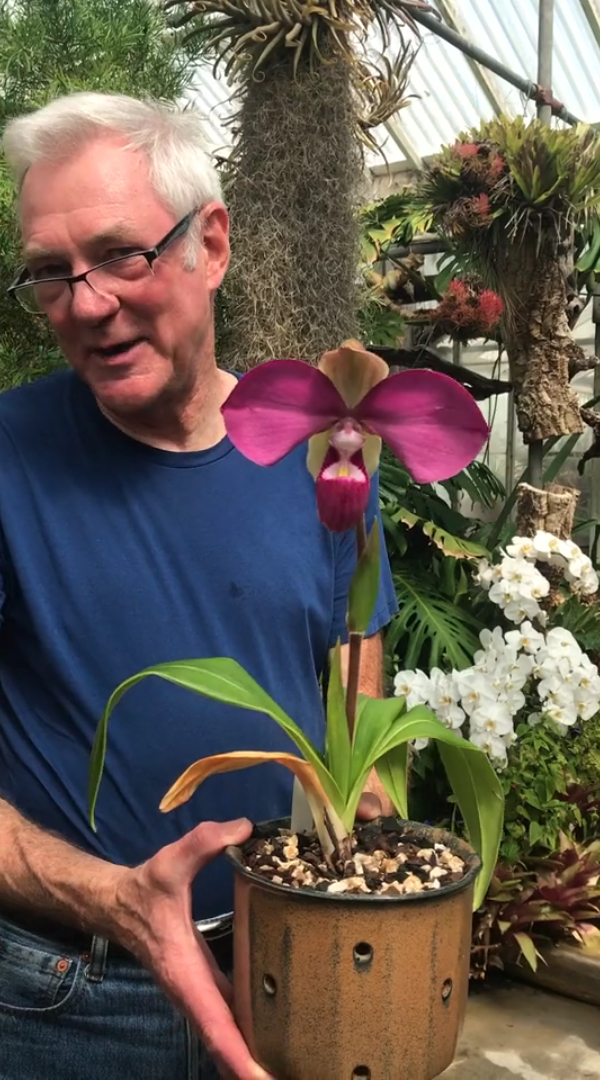
Greenhouse Moments 4
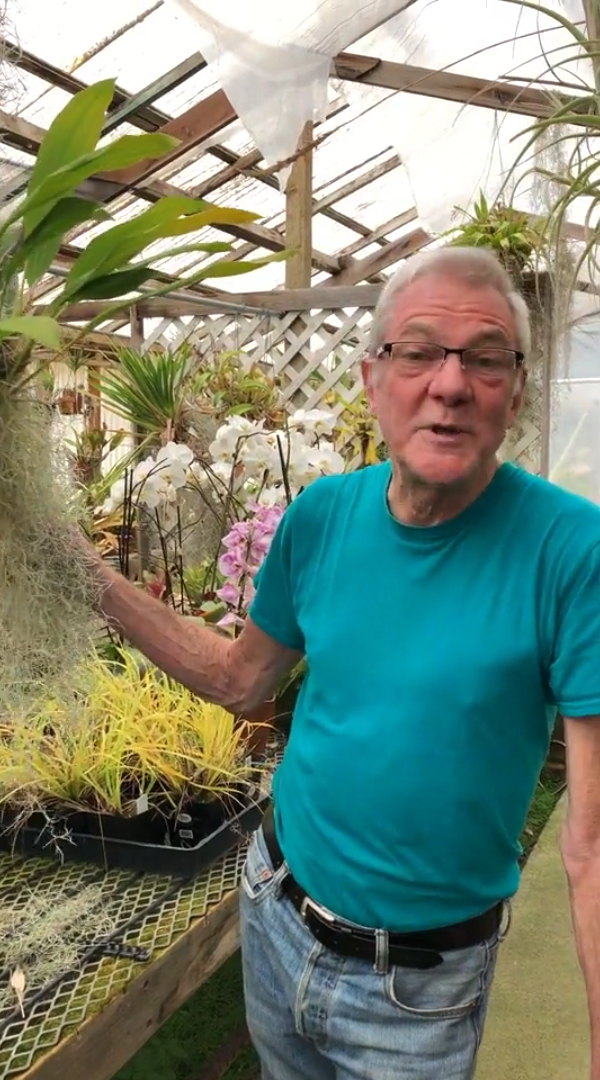
Greenhouse Moments 5
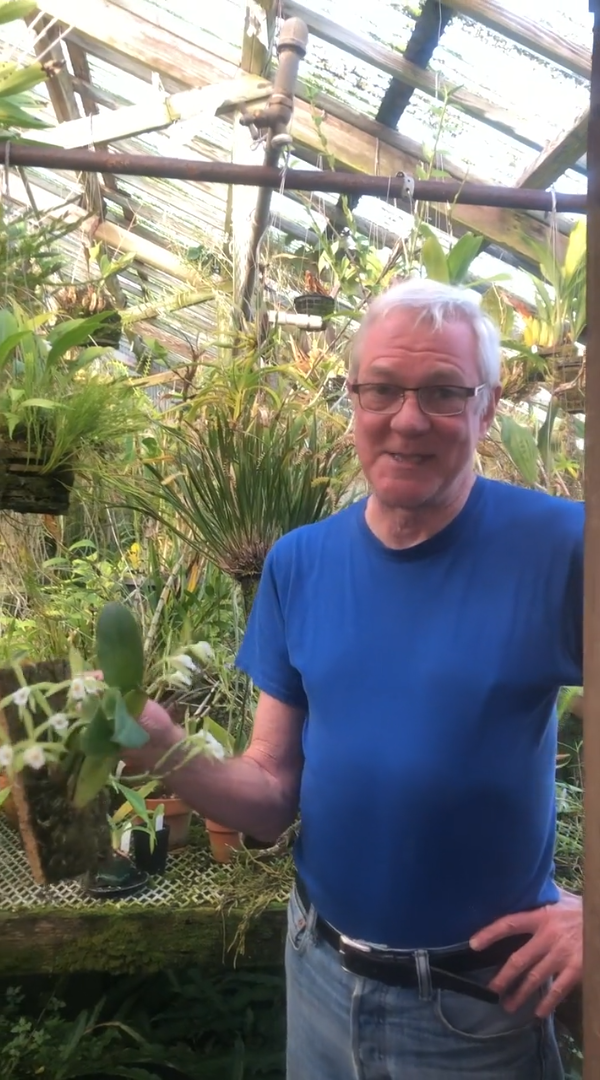
Greenhouse Moments 6

Greenhouse Moments 7
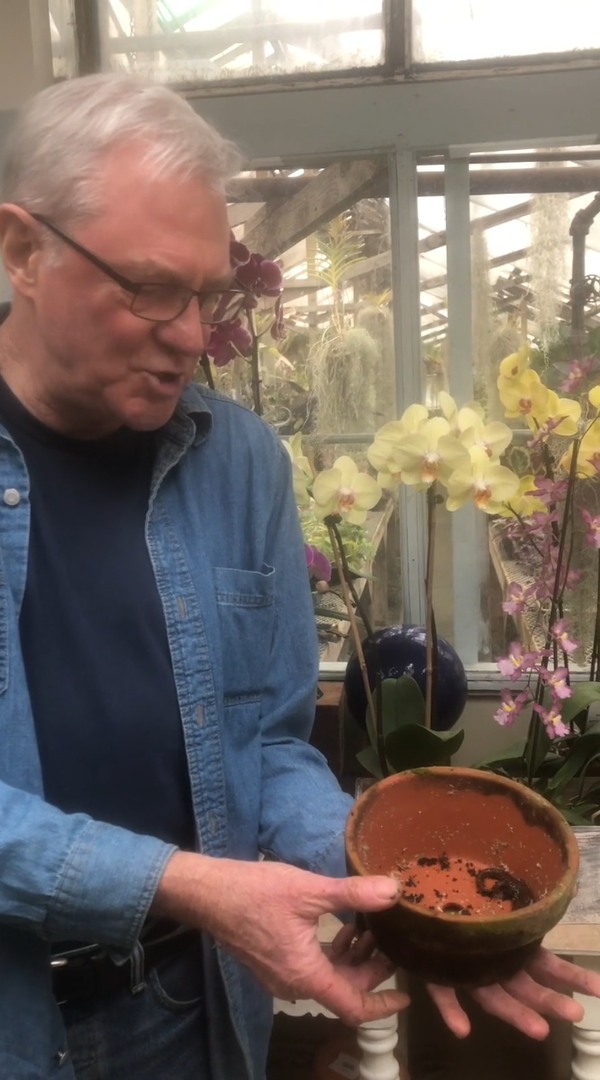
Greenhouse Moments 8
Odontoglossum
(oh-don-toh-gloss-um)
The genus Odontoglossum is a large one, containing approximately 300 species. Botanists have
tidied up
the genus by moving some of the species
to the genus Rossioglossum, but these are still commonly called odontoglossums.
The exquisite inflorescences of these plants are produced from the bases of the flattened
pseudobulbs, and are usually erect and arching. The flowers are often large and showy, and
come in shades of white, yellow, or green, marked with purple or brown blotches.
Temperature and Humidity :Night temperatures of
52 to SS F and day temperatures of 65 to 70 F are ideal. However, plants in prime condition
will tolerate a wider range, from a low of 45 F to a high of 90 F, for several days. High
temperatures tend to prevent the flowers from opening properly, particularly the lip of
Odontoglnssum crispum. Evaporative coolers installed in greenhouses in warm climates
increase the chances of raising odontoglossums successfully.
To maintain cool and humid conditions in the greenhouse, water under the benches most
mornings and, on bright days, water the leaves (but just enough so that they will be dry by
nightfall). This scheme is one way to prevent red spider mites, a microscopic culprit that
damages foliage and flowers.
A humidity of 65 percent is ideal, but odontoglossums are surprisingly tolerant of
moderately lower or higher levels.
Light :Odontoglossums require between 1,500 and 2,000 foot-candies of light. The
maximum
light permissible results in faint red streaks in the leaves. They may be raised in maximum
light, which results in improved flower substance, when provided with cool temperatures and
plenty of air movement. In the house, an east-facing window is best. During the frost-free
months, set odontoglossums outside in a breezy spot with full open light but no direct
sunlight.
Air Movement: Odontoglossums thrive in an atmosphere that is fresh and buoyant from the use
of fans, ventilation and misting.
Watering :The frequency of watering depends on the potting mix and ventilation.
Odontoglossums require lots of moisture when rooted in a free-draining mix, but expect
decreased vigor if the mix is allowed to remain soggy. Periodically, collect rainwater and
use it to rinse fertilizer salts that accumulate in the mix. Excess fertilizer causes leaf
tips to brown.
Fertilizing: Nourish Odontoglossums in bark mixes with 20-20-20 fertilizer diluted to
one-quarter to one-half of the recommended strength.
Dendrobium
(den-droh-bee-um)
PHALAENOPSIS-TYPE DENDROBIUM
hybrids are derived from Dendrobium phalaenopsis (syn. Dendrobium bigibbum). Commonly
referred to as den-phals, they are among the easiest of orchids to grow under most
conditions. These evergreen orchids reward the beginner with sprays of vividly colored
long-lasting flowers in exchange for minimal care.
Arching inflorescences are borne on upright, cylindrical, 2- to 4-feet-tall pseudobulbs,
which are slightly swollen at or above the middle. New growths develop from "eyes" near the
base of the pseudobulbs and sometimes higher near the leaf joints. Somewhat-leathery, 3- to
6-inch-long leaves clothe the upper half of the pseudobulbs, and usually remain for one to
two years. The number of flowers borne on an inflorescence increases as the plant matures.
First-bloom seedlings often bear one to five flowers per spray; mature plants can produce 20
or more flowers per cane on each of many canes. Individual flowers last six to eight weeks
and provide color for several months each autumn. Den-phal flowers, typically round and
flat, with overlapping petals and sepals, range in color from pure white to deep plum and
shades and hues in between. To prevent distorting the flowers' orientation, avoid moving or
turning specimens once inflorescences begin to emerge.
Temperature and Humidity :Den-phals thrive under a broad spectrum of temperature and
light combinations. The recommended temperature range is between 50 and 90 F, but
temperatures a few degrees higher or lower are acceptable and produce no detrimental
effects. A relative humidity of 50 to 60 percent is optimal. In climates with lower
humidity, mist the plants on hot, dry days. Avoid excessive water on the leaves and in the
crown of the plants during humid and cool weather to prevent crown rot and fungal problems.
Fans which keep the air moving without causing excessive chilling or drying keep the foliage
dry, and also help remove heat from the leaves during hot weather.
Light :Direct filtered sun is essential for flowering, but provide 30- to 70-percent
shade during midday. Bright light will generally encourage flowering, provided excessive
leaf temperatures are avoided. Although phalaenopsis-type dendrobiums can be grown under
artificial lighting, this practice is not recommended due to the plants' height.
Watering :The moisture needs of these orchids are similar to those of cattleyas.
Thoroughly soak the potting medium, then allow it to dry out before watering again. Watering
twice a week is generally adequate with properly potted plants in most climates. In winter,
watering frequency may be reduced if the plants take longer to dry.
Fertilizing :Apply a balanced fertilizer containing minor elements on a regular
basis. When using inorganic media it is especially important to provide an adequate mix of
nutrients, including minor nutritional elements. This is important since little nutrition is
provided by the decomposition of the potting medium.
Dendrobium nobile
DENDROBIUM NOBILE AND RELATED species are native to Burma, India, Thailand and
Indochina. Here they grow on trees, from the lowlands up to the cool highlands of the
Himalayas at elevations of 4,000 feet. The species and their hybrids are extremely hardy,
surviving temperatures ranging from warm to hot as well as enduring freezing conditions in
some locales. If kept dry, these species and hybrids will survive winter temperatures of 37
to 39 F and flower around April.
Temperature and Humidity :For differentiation of flower buds, it is important to
expose plants to low temperatures. The pseudo bulbs, which grow from spring through summer
and mature in the autumn, require approximately one month of low night temperatures.
Therefore, in the autumn when it becomes cool, do not rush to bring plants into the
greenhouse, unless a freeze is forecast. Leave them outside to cool, and they will bloom
better.
When in full bloom, flowers will last longer if the plant is placed in a cool, dry spot away
from any draft and out of direct sunlight. A night temperature of 40 to 50 F is ideal. Water
the plant enough to moisten the surface of the medium once every five to seven days during
the warmest part of the day. The medium should dry before evening.
Light :Small plants require no shade during the winter. However, 30- to 40percent
shade is needed from late spring through autumn for healthy growth. Medium- or
flowering-size plants do not need shade any time (unless the leaves begin to burn). Full sun
promotes vigorous growth.
Where summer breezes are minimal, provide 30- to 40-percent shade during those months. If
ventilation is inadequate in the greenhouse during the flowering season, buds will be
damaged, and flowering will be poor. Therefore, 30- to 40-percent shade is recommended from
the time flower buds appear until the end of the flowering season.
Watering :When temperatures begin to rise in the spring, gradually start watering. In
the summer, when temperatures are high and sunlight is strong, water almost every day to
keep the plant from dehydrating. In late September, when temperatures begin to fall,
gradually reduce watering. When the night temperature falls below 50 F, water only enough to
keep the canes from shriveling; once a week should be adequate. When night temperatures fall
below 40 F, keep the plants dry. In a greenhouse in which night temperatures are kept above
60 F, water lightly when the plants are dry. It is important that the medium surface is dry
by evening.
Fertilizing :A low-nitrogen fertilizer is ideal for flowering specimens. Discontinue
fertilizing after early August to guarantee many flowers. For small plants grown without
supplemental heat, and where night temperatures fall below 45 F in winter, apply fertilizer
high in nitrogen when night temperatures rise to about 50 F (March or April). If night
temperatures in winter are above 50 F, fertilize in January. The easiest way to fertilize
small plants is with time-release fertilizers that are effective for more than six months.
Do not use timed-release fertilizers on flowering-size plants; they may cause
overfertilization.
Vanda (van-dah)
Vanda are some of the most popular cultivated orchids. The broad spectrum of their
flower colors include purple, brown, yellow, white, red, and blue-colors that have been
mixed in fantastic combinations and patterns by hybridizers. The flowers are large and
long-lived, and often appear more than once a year. They are produced from the points where
the leaves join the stem.
Vanda plants have an interesting shape; the thick upright stems bear opposite ranks of
leaves nourished by a tangle of aerial roots. As with the other monopodia orchids, all new
growth takes place at the top of the plant. Some species grow very tall-up to 6 feet-but you
can keep them at a manageable size by topping them when they get too tall.
Temperature and Humidity :Vandaceous orchids thrive when the temperature during the
day is 65 F or higher and night temperatures are not lower than 55 F. Warm temperatures and
bright light promote active growth year-round. These orchids tolerate long periods of hot
weather and short periods of cold. Some vandaceous plants can withstand temperatures as low
as 38 F for two to three hours, suffering damage to root tips and flower buds, but not the
plant itself. Humidity around 80 percent is appropriate on hot sunny days.
Light : Vandaceous orchids require strong light. Provide full morning sun when
possible. Semi-terete and terete types can be grown in full sun all day in tropical areas
where the humidity is high. Strap-leaved plants need additional protection during the
hottest part of the day.
Air Movement :In the greenhouse, under summer sun, vigorous air movement from a fan
is important to keep leaf temperature down and avoid cell damage from heat. For more open
conditions - outdoors, in shade houses or lath houses - the natural breeze will balance
light, temperature and moisture for healthy growth and flowering. It is important to
restrict air movement under colder temperatures.
Watering :A high daytime humidity is essential, especially on sunny days, and
vandaceous plants outdoors may need watering and misting several times daily during the
growing season when the sun is bright. Somewhat less watering is required indoors, although
on sunny days plants should be misted once or twice. Limit watering during cooler weather,
on cloudy days or after repotting.
Fertilizing : Vandaceous orchids require copious quantities of nutrients. Give plants
in the greenhouse a solution of a complete fertilizer, such as 20-20-20.
Cymbidium
Cymbidium hybrids fall into two main groups, standards and miniatures. Standard
cymbidiums bear flowers between 3 and 5 inches across and grow up to 3 feet tall. They
require bright sunlight and very cool night temperatures. Along the California coast, where
these requirements are easily satisfied, standard cymbidiums are considered low-maintenance
outdoor plants.
The flowers of miniature cymbidiums are between 1 and 3 inches in diameter. Although they
are stilt too large to be considered true miniature orchids (which are generally less than 1
foot tall), their1- to 2-foot maximum height makes them more manageable. Although many
miniatures will produce flowers in warmer temperatures than will standards, their high light
requirement still makes them greenhouse or outdoor plants.
The cymbidium’s flower colors, which include all but the blue part of the rainbow, are often
combined in lovely patterns. Imagine, for example, a pistachio green flower with a scarlet
and white lip. The individual flowers are popular for corsages and when left on the plant
last between 8 and 10 weeks.
Watering :Water cymbidiums thoroughly to avoid the buildup of fertilizer salts.
Cymbidiums are native to monsoon areas, so they require ample water during their summer
growing season. This does not mean that during the cool flower season the plants go dormant.
Pot size and coarseness of the mix dictate the frequency of watering. A guideline: Water
once a week, more frequently during warm weather, and less often in cool or wet weather.
Overwatering will cause roots to rot.
Fertilizing :The ideal feeding program is dictated by the seasons. Provide a balanced
formula (20-20-20) all year long, supplementing with nitrogen in summer, to speed growth.
Plants in organic mixes, such as fir bark, require more frequent feeding during the growing
season. Apply the fertilizer one-half strength every two weeks rather than once a month.
Toward the end of the growing season (June), discontinue the nitrogen supplement to promote
the initiation of inflorescence.
Masdevallia
(maz-de-val-lee-a)
Sympodial
Light Low to medium
Temperature Most cool, some intermediate
Flowering Varies, most spring to sunnier
Care Average to difficult
Masdevallia are true cloud forest orchids, requiring constant moisture. They have no pseudo
bulbs—the fleshy leaves are borne on tiny stems sprouting from small rhizomes—and thus
cannot endure periods without water. Most are from high elevations (between 6,000 and 12,000
feet) and need cool conditions, but a few species will grow in intermediate temperatures.
The showiest parts of a masdevallia flower are the sepals; in this genus the petals are tiny
structures nestled in the center of the flower. The sepals join at the base and narrow
toward the tips, often into long tails, making the flowers of some species resemble kites.
Most forms have distinctly triangular or tubular flowers. The flower colors include pure
white, green, and brownish black, but tile most popular species are orange to red. Flower
sizes range from about 1 inch to as long as 10 inches, Some are pendent, others are erect.
Although masdevallias need lots of humidity, excess water on the plant causes a fungus
infection that rots the leaves where they join the stern. Don't compensate for low humidity
with frequent misting or watering.
Light :Masdevallia usually grow In relatively shaded areas in the forest. In
cultivation, about 1,000 to 1,400 foot-candles of light is adequate. The leaf color should
be medium + to light green. Too much light quickly produces yellow, leaves.
Watering :Because masdevallia are relatively small plants potted in small pots, it is
necessary to water often. Frequency depends on time of year and type of container-fluid and
medium, usually ranging from two to three times a week in the summer to about once a week in
the winter. Keep the medium moist but not sopping wet. Flush water through pots to insure
thorough wetting. Overwatering does not make up for lack of humidify and will cause root
rot.
Fertilizing :Masdevallia are not heavy feeders. Apply one-half strength of a balanced
fertilizer once of twice if month. Overfeeding may cause leaf-tip burn.
(Shelldance Gardens 20-20-20 Professional Orchid food is great)
Paphiopedilum
(pafl-ee-oh-ped-i-lum)
Flowering :Generally fall to spring
Care :Very easy to difficult
Paphiopedilum differ from other orchids in both the appearance of the plants and
their flowers. One of the most obvious features that set the flowers apart is the lip, which
is modified into a pouch like a cup. This pouch suggests the name "lady's slipper,"a common
name applied to paphiopedilums and their relatives in the subfamily Cypripedioideae.
Temperature and Humidity :The green-leaved types ideally require a minimum night
temperature around SO to SS F, while the mottled-leaved types need 60 to 65 F at night. Day
temperatures should range between 70 F and 80 F, although short periods of moderately higher
or lower temperatures will not injure the plants. The humidity should be moderate, between
40 and 50 percent during the day.
Light :Paphiopedilums enjoy medium light intensity, requiring 800 to 1,000
footcandles throughout the year for optimum growth. Avoid direct sun, except in the early
morning. In the home, move plants back from the window at the height of the noonday sun or,
ideally, grow them behind a sheer curtain.
Watering :Although Paphiopedilum are sympodial orchids, they do not possess pseudo
bulbs and hence, like phalaenopsis, must have a regular and constant water supply. This will
entail keeping the medium moist but not wet, a technique with which beginners will have to
experiment in order to perfect. Water early in the day so that the foliage will dry before
temperatures drop at nightfall.
Paphiopedilum typically need watering every five to seven days, but individual conditions
require some variance. The potting mix, the humidity surrounding the plants and weather
conditions all affect the rate at which plants dry and thus require water.
For those growers using bark as a potting medium, it is extremely important not to permit
the plant to dry completely because the bark is then difficult to rewet. Water will channel
through the dry mix leaving most of the pot dry. When this happens, submerge the whole pot
and mix in a pan of water until moisture has been restored to the pot.
Fertilizing :Feed plants in fir bark with a high-nitrogen fertilizer (30-10-20 or
30-10-10 ratio) at half of the recommended strength: Fertilize greenhouse-grown plants three
times and then apply plain water for the fourth watering to leach out any salts that have
accumulated. For home or windowsill growing, alternate fertilizer and plain water. Plants
grown in some of the more complicated mixes consisting of rock, peat, oak leaf mold, etc.,
should receive fertilizer at a more reduced strength because some of these elements may
provide.
Miltonia
(mil-toh-nee-a)
Flowering :Most summer to fall
Care :Average to difficult
Miltonias are the well-known "pansy orchids," plants with large flat flowers that look very
much like the flowers in the popular genus Viola. Some miltonia flowers are lightly
fragrant. A part of the subtribe Oncidiinae, the approximately twenty species of Miltonias
are distinguished from their relatives in the Odontoglossum, Oncidium, and Brassia genera by
differences in their flowers-very minor differences in some cases. When not in flower, the
thin leaves and flattened pseudobulbs of miltonias are so similar to those of species in
related genera that it is sometimes difficult to tell the plants apart.
There are two types of miltonias, differing in flower form and cultural requirements. The
ones with the flat pansy-type flowers grow in high, cool areas of Colombia and nearby
countries. These are now technically grouped in the genus Miltoniopsis, Flower colors
in this group range from white to pink, with splotches of crimson to magenta. These plants
do best in light intensities in the 1,000 to 1,500 footcandle range, about the same
intensity required by phalaenopsis plants. They need cool night temperatures and are
sensitive to daytime temperatures over 80° F.
The flowers of the other type, the Brazilian Miltonias, don't resemble pansies; they look
more like odontoglossums, blooming in shades of yellow and green marked with brown, purple,
or red. They prefer medium light intensities (I,500 to 3,000 foot-candles) and slightly
warmer temperatures than do the Colombian species.
Miltonias of both types sunburn easily. If the plants are getting enough light, the leaves
will be light green, lighter than you may think is healthy if you compare them to most other
plants. A slight tinge of pink indicates that the plants are receiving as much light as they
will tolerate.
Fertilizing :In fir bark culture, administer 30-10-10 fertilizer weekly at the rate
½ teaspoon per gallon of water. Because pansy orchids are not deciduous, continue to feed
them during the winter at the rate of ¼ teaspoon per gallon, but only if the plants need
water.
Watering :Despite the presence of their water-storing pseudo bulbs, miltonia can't
withstand periods of dryness. Water them as you would cymbidiums, keeping the medium
moist-but not soggy-at all times. A potting mix of fine fir bark, amended with sphagnum
moss, perlite, and a little charcoal provides a good balance of water and air for these
moisture-loving plants. If the new leaves emerge pleated, the plant is not getting enough
water. Increased watering won't flatten them out (they will always look like accordions) but
the next leaves should be smooth. The flowers of the Colombian species last from two weeks
to two months on the plant, but wither quickly when cut. Brazilian miltonias make fine cut
flowers.
Phalaenopsis
Flowering :flowers throughout the year.
Light :they grow easily in a bright window, east window is ideal in the home. In
overcast, northern winter climates, a full south exposure may be needed.
Water :Plants should be thoroughly watered and not watered again until nearly dry.
most problems occur by overwatering, if your orchid is growing in moss ,water when the moss
is slightly spongy to touch, if it is growing in bark, use your timetable as a guide .(i.e.;
every 5-10 days depending on the weather)
Fertilize :Provide your plant with nutrients on a regular schedule,
If the bark is the potting media, a high–nitrogen fertilizer/water soluble (such as
30-10-10) otherwise balanced fertilizer (such as 18-18-18) is good. To encourage flowering a
high-phosphorus fertilizer (such as 10-30-20) can be applied to promote blooming.
We always recommend using a diluted ratio.
Repotting :Phalaenopsis are one of the most common-commercially grown and available
orchids. Plants are either grown in a moss or bark media– if yours orchid came growing in
moss, its best to replant the orchid soon after it finishes blooming- preferably in to bark-
the guide to pot size should be one inch larger than the original container-fluid it arrived
in
rule, or provide a new pot just big enough that the roots touch the side of the new pot,
fill in all the empty space with the fresh bark (1/2” to ¾” is good)
Bromeliads
Bromeliads are among the most colorful plants living in the jungle canopy, rivaling even the
orchids in the drama of their blooms and foliage. Many of these plants can be shaped like a
vase, which will hold water, so the plant can slowly absorb the moisture as needed.
Light: Medium bright light will ensure that the foliage remains bright and in vibrant
color. Many of the Bromeliads develop bright colors like we humans do -being out in the sun,
it’s a suntan.
Water: Drench your plants before they become bone dry- typically every 7-10 days.
Pour out any old water and replace with fresh, as you would do with cut flowers, if the
plant is to large to service, let the plant use up all water at the base of the leaves
before topping it off with fresh.
Food: Nourish plants with very diluted, “water soluble” fertilizer; a balance blend
(18-18-18) is good. Be consistent in feeding to promote even, steady growth.
Containers: Bromeliads like to be in small containers- Repotting is only necessary when the
plant becomes to heavy for the container-fluid and or tips over easily. Preferred planting
mix is peats and course sand.
Tillandsia
(AKA: air plants)
The popular air plants are members of the Bromeliad family, rather than having a reservoir
to hold water to drink, these clever plants absorb water on contact, like a sponge.
Tillandsia plants are native to North and South America, with a wide range of habitats,
living high in the canopy of trees, perched on the edge of a rocky cliff, even some happily
clinging to a telephone line. – They all have unique character in their appearance depending
on their specific natural range.
Light: Bright to very bright light is the rule- the more silver grey or fuzzy
foliage- the more light they want to be happy.
Water: drench plants- typically every 5-7 days ,if your plant is living inside.(more
often and as needed depending on the weather if growth outside.)
Food: Nourish plants with very diluted, “water soluble” fertilizer; a balance blend
(18-18-18) is good. Be consistent in feeding to promote even, steady growth.
Potting:
Usually Air Plants are growth without pots, tied on to branches, suspended in coconut
shells, or nested on rocks inside a tea cup.